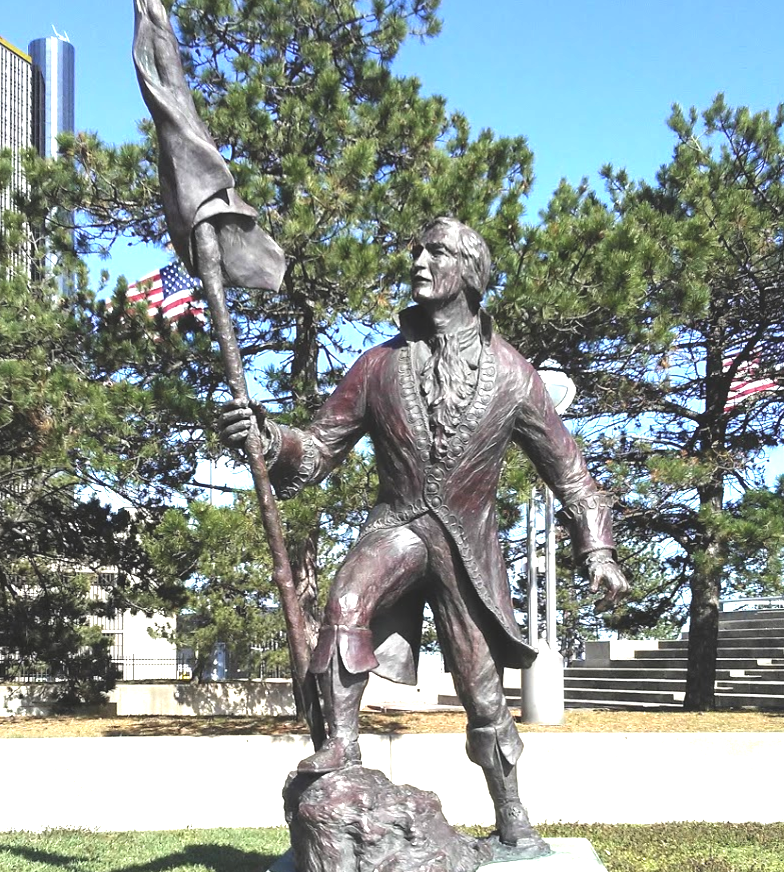The statue typically portrays Antoine de la Mothe Cadillac in the attire of a French colonial officer from the late 17th to early 18th centuries. He may be shown holding a symbol of authority, such as a sword or a document, representing his role as a leader and founder. The sculpture is usually cast in bronze and set upon a stone or granite pedestal, which may bear an inscription with his name, title, and notable historical contributions.
Antoine Laumet de La Mothe, sieur de Cadillac, was born in 1658 in Saint-Nicolas-de-la-Grave, France. He arrived in New France, as the French colonial territory in North America was known, and eventually became the commander of the fort at Michilimackinac. In 1701, Cadillac founded Fort Pontchartrain du Détroit, which later became the city of Detroit.
Cadillac’s vision was to establish a strategic French outpost to control the fur trade and counter the influence of the English and their Native American allies in the region. The settlement he founded would play a significant role in the colonial history of North America and become a focal point for French influence in the Great Lakes region.The statue of Antoine de la Mothe Cadillac is a tribute to the city’s founder and serves as a reminder of Detroit’s French colonial heritage. It acknowledges the early European exploration and settlement that would lay the groundwork for the city’s future growth and development.
Cadillac’s statue is also a symbol of the city’s resilience and adaptability, qualities that have been essential throughout Detroit’s history, from its colonial beginnings through its rise as a center of industry and beyond. The monument is a point of historical pride for residents and a place of interest for visitors seeking to understand the city’s origins.
By honoring Cadillac, the city of Detroit recognizes not only its past but also the enduring spirit of exploration, ambition, and determination that he embodied and that continues to define the city today.

